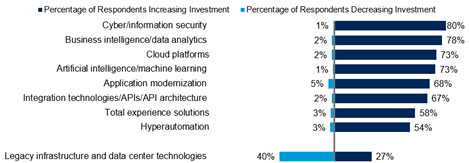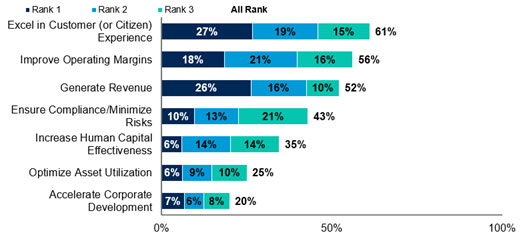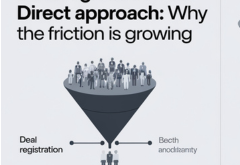A recent survey conducted by Gartner reveals that 45% of Chief Information Officers (CIOs) are adopting a collaborative approach to digital leadership. This entails working closely with other CXO (Chief Experience Officer) peers to jointly oversee and lead digital initiatives across their organizations.
According to Mandi Bishop, Distinguished VP Analyst at Gartner, this shift in leadership roles among CIOs is a response to the growing demands for digital transformation. To achieve digital success, CIOs must share responsibilities with business leaders, ensuring that digital capabilities are developed and managed in alignment with their organizations’ objectives.
The 2024 Gartner CIO and Technology Executive Survey collected responses from 2,457 CIOs in 84 countries, encompassing various industries and representing a combined revenue and public-sector budget of approximately $12.5 trillion, along with $163 billion in IT expenditure.
The survey revealed several key trends in the digital landscape:
Democratization of Digital Delivery: CIOs are leveraging technologies like low-code platforms to facilitate digital delivery. Approximately 64% of CIOs have already deployed or plan to deploy low-code platforms in the next two years. Furthermore, generative artificial intelligence (GenAI), regarded as a transformative technology by 70% of CIOs, is expected to advance the democratization of digital delivery. Although only 9% of CIOs have currently implemented GenAI, 55% plan to deploy it in the next 24 months.
CIOs’ Expected Change in Technology Investments in 2024

Areas of Investment: In 2024, CIOs are focusing their investments on cybersecurity, data analytics, and cloud platforms.
Key Digital Technology Outcomes: CIOs identified excelling in customer or citizen experience, enhancing operating margins, and generating revenue as the most critical outcomes from their digital technology investments.
CIOs’ Most Critical Enterprise Outcomes from Digital Technology Investments

Expanding Roles: Many CIOs aspire to expand their roles, with 42% aiming to grow within their current scope, and 43% seeking additional leadership responsibilities.
The survey also identified three distinct profiles among CIOs in terms of how they accelerate and scale digital delivery:
Operators: 55% of CIOs maintain digital delivery responsibilities while partnering with CXOs as sponsors for digital initiatives within business areas.
Explorers: 33% of CIOs involve CXOs and business area staff in digital delivery activities.
Franchisers: 12% of CIOs co-lead, co-deliver, and co-govern digital initiatives with their CXO peers, promoting shared responsibility for technology governance.
Among these profiles, the study found that franchiser CIOs achieved the best outcomes for digital initiatives. Specifically, 63% of enterprise-wide digital initiatives met or exceeded outcome targets when CIOs adopted a franchise model. In comparison, only 43% of digital initiatives succeeded when CIOs retained a traditional operator model.
According to Janelle Hill, Distinguished VP Analyst at Gartner, the trend of democratizing digital delivery aims to drive innovation, agility, and speed to market. CIOs are expected to orchestrate a wide range of enterprise outcomes, which necessitates the integration and alignment of digital initiatives led by CXO counterparts.
In franchise models, CIOs and CXOs jointly share responsibility for technology governance, with 47% of franchiser CIOs agreeing that businesses should take part in compliance and risk management. This figure is in contrast to the 19% of operators who share the same viewpoint.
This collaborative governance approach is being applied to areas traditionally overseen by CIOs, such as cybersecurity and data privacy, with CXOs recognizing their shared responsibility for adhering to governance standards.
The Gartner survey highlights that co-ownership of digital delivery between CIOs and CXOs is becoming a fundamental aspect of achieving enterprise goals, extending beyond functional outcomes.
The changing landscape of digital leadership is indicative of the dynamic nature of digital transformation within organizations, emphasizing the need for collaborative and cross-functional strategies in the digital age.
 Latest Technology News Today – Get Latest Information Technology Updates and Services Latest Technology News Today – Get Latest Information Technology Updates and Services
Latest Technology News Today – Get Latest Information Technology Updates and Services Latest Technology News Today – Get Latest Information Technology Updates and Services 









